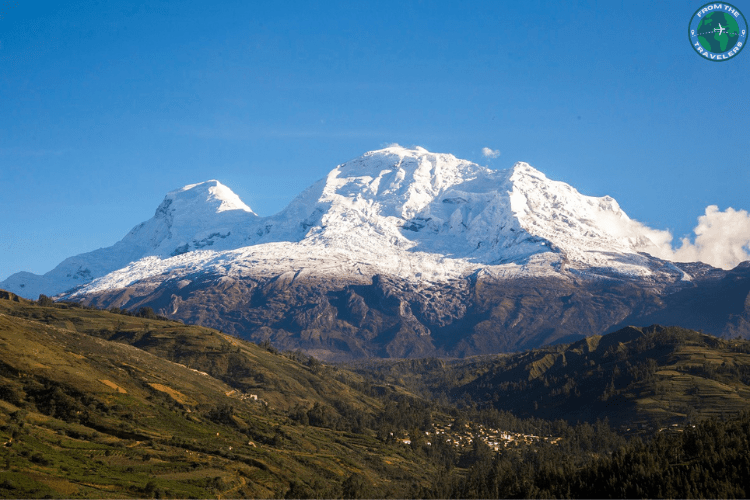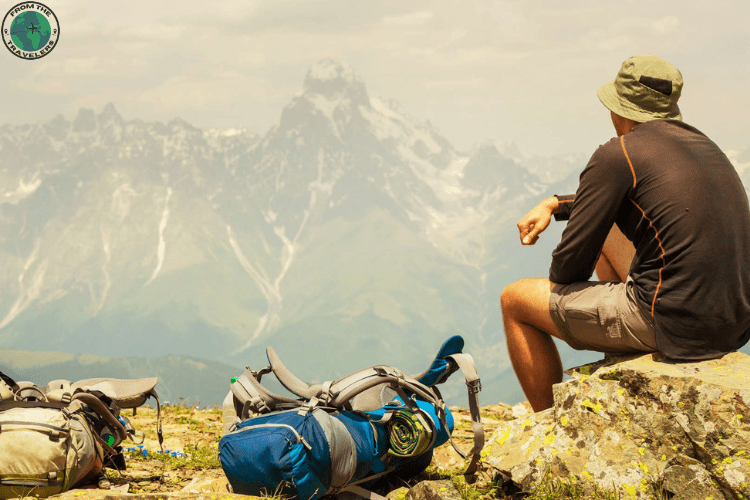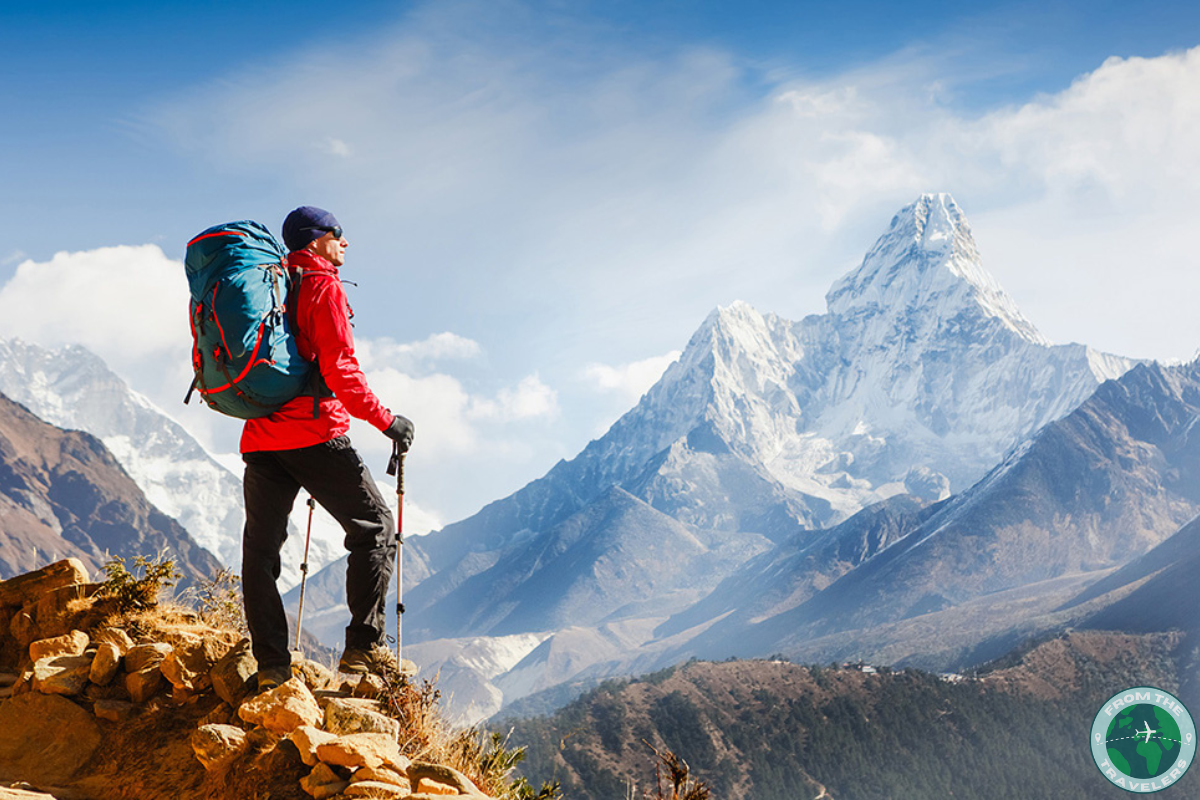Are you all set to get on the ultimate mountaineering adventure? Look no further than Peru, where towering peaks and spectacular landscapes are waiting for you. Peru offers an unrivalled playground for climbers of all skill levels as it has a wide range of mountains, including the iconic Andes., Peru has something for everyone whether you’re an experienced climber or a beginner. This guide will take you on a journey through Peru’s most awe-inspiring peaks either it’s the mystical beauty of Huascaran, the tallest mountain in Peru, to the indomitable challenge of Alpamayo, known as the most beautiful mountain in the world. We’ll offer expert tips on gear, adjustment, and route planning, making sure that you stay safe and succeed on the mountains. So, put on your boots, pack your equipment and get ready to conquer the heights of Peru. Let this manual be your compass as you set on a venture of a lifetime. Climb higher, go ahead, and explore the joy which is waiting for you in the mountains of Peru.

Popular Mountains In Peru For Mountaineering
Peru is home to some of the most charismatic and tough mountains in the world. Whether you’re an experienced mountaineer looking for your next big conquest or a beginner seeking an exciting adventure, Peru has a wide range of peaks to match every level of expertise. The following mountains are among the most famous destinations for mountaineering in Peru:
- Huascaran: Huascaran is the tallest mountain in Peru, standing at a remarkable height of 6,768 meters (22,205 feet). It provides a variety of routes that cater to both experienced climbers and those new to mountaineering. The eye-catching views from the summit make the try worth it, depicting the immense beauty of the surrounding Cordillera Blanca.
- Alpamayo: Considered by many as the most beautiful mountain in the world, Alpamayo captivates mountaineers from all over the world. With its unique pyramid shape and icy ridges, it presents a difficult challenge. The climb demands technical skills and experience, making it an ultimate aim for seasoned climbers searching for an unforgettable adventure.
- Ausangate: Located in the Vilcanota Mountain Range, Ausangate is not only a spectacular mountain but also has cultural significance for the local communities. This 6,384-meter (20,945-foot) peak provides a range of routes, from less technical ascents to more challenging climbs. The vibrant colours of Rainbow Mountain, a natural wonder in the area, add to the allure of this majestic mountain.

Essential Gear For High-Altitude Trekking In Peru
- Mountaineering Boots: Investing in a pair of high-quality mountaineering boots is necessary for tackling the rough ground of Peru’s mountains. Search for waterproof boots, insulated, and have a well-built sole for grip on slippery surfaces. Proper fit and comfort are key, as you’ll be spending long hours in these boots.
- Crampons: Crampons are metal spikes that tie to your boots, providing grip on icy surfaces. They are necessary for navigating glaciers and sharp snow slopes. Make sure to select crampons that are well-suited with your boots and practice fitting and adjusting them before your adventure.
- Ice Axe: An ice axe is a multipurpose tool that helps with balance, self-arrest, and anchoring in snow or ice. It’s vital for keeping stability and safety on steep slopes. Select an ice axe which is according to your height and experience level, and learn the proper techniques for using it efficiently.
- Climbing Harness and Helmet: A climbing harness offers security during roped sections and helps avoid falls. Look for a binder that fits well and is comfortable for long periods of wear. Additionally, a sturdy helmet is essential for protecting your head from falling rocks and ice.
- Layered Clothing: Peru’s mountain environments can show severe temperature changes throughout the day. Layered clothing permits you to adjust to changing conditions and maintain comfort.
- Navigation Tools: Carrying a map, compass, and GPS device is critical for finding direction and navigation in the mountains. Make yourself familiar with the area and study the routes in advance. These gears will assist you in staying on track and avoid getting lost in unfamiliar territory.
Physical Preparation For Peru Climbing
Mountaineering in Peru demands physical fitness and patience due to the high altitudes and demanding territory. Proper physical preparation will not only improve your performance but also lessen the risk of altitude sickness and injuries.
- Cardiovascular Training: Engage in regular cardiovascular exercises such as running, cycling, or swimming to enhance your stamina. Plan for at least three to four sessions per week, regularly increasing the duration and intensity of your workouts. This will help your body adjust to the reduced oxygen levels at high altitudes.
- Strength and Resistance Training: Include strength and resistance training exercises in your fitness routine to build muscular power and patience. Focus on exercises that target your legs, core, and upper body, as these areas are deeply engaged during mountaineering. Squats, lunges, planks and pull-ups are excellent exercises to include into your training program.
- Altitude Training: If possible, you might consider including altitude training into your preparation. This can involve training at simulated high altitudes or spending time in actual high-altitude locations before your expedition. Altitude training helps your body acclimatize to lower oxygen levels, reducing the risk of altitude sickness and improving your performance.
- Hiking and Climbing Practice: To familiarize yourself with the physical requirements of mountaineering, go on regular hiking and climbing practice. Select trails and routes that mimic the terrain and conditions you will come across in Peru. Increase the difficulty and duration of your hikes in regular intervals and climbs to build confidence and patience.
- Yoga and Flexibility Training: Include yoga or other flexibility training exercises into your routine to enhance balance, flexibility, and overall body control. These practices can also help prevent injuries and promote faster recovery. Focus on stretches that target your legs, back, and shoulders, as these areas are heavily engaged during mountaineering.
Best Time To Go Andean Ascents
The most favourable time for mountaineering in Peru is during the dry season, from May to September. With clear skies and stable weather conditions, climbers can deal with the Andean peaks, including iconic summits like Huascarán and Alpamayo. Avoid the rainy season from December to March, as wet conditions can create challenges. Plan your journey between late spring and early fall for the best mountaineering experience in Peru.
Safety Tips For Peru Rock Climbing
Mountaineering in Peru provides unbelievable rewards, but it also comes with inbuilt risks. Prioritizing safety is necessary to guarantee a successful and enjoyable tour.
- Acclimatization: Allow ample time for acclimatization before going to climb higher altitudes. Climbing too quickly can result in altitude sickness, which can be life-threatening. Plan for rest days at intermediate altitudes to allow your body to adjust to reduced oxygen levels.
- Hydration and Nutrition: Proper hydration and nutrition is key to maintaining energy levels and preventing altitude-related illnesses. Drink enough water and eat a balanced diet rich in carbohydrates, protein, and healthy fats. Pack energy-dense snacks for quick fuel during your climbs.
- Weather Monitoring: Stay up to date about weather conditions in the mountains. Particularly in high-altitude environments, unexpected weather changes can be dangerous. Check trustworthy weather forecasts and be prepared to change your plans if required.
- Rope and Safety Equipment: When tackling technical routes or traversing glaciers, make sure you are capable of rope handling and self-arrest techniques. Carry and use suitable safety equipment, such as harnesses, helmets, and crampons, and put them into practice before your adventure.
- Hire a Local Guide: Consider hiring a local guide who is familiar with the area, weather patterns, and rescue protocols. Local guides have very useful knowledge and experience that can boost your safety and overall mountaineering experience in Peru.
- Buddy System: Climbing with a partner or in a group is highly suggested for safety concerns. The buddy system offers support, assists with route finding, and makes sure that someone is always accessible in case of emergencies.
- Emergency Preparedness: Always carry a well-stocked first aid kit and make yourself acquainted with fundamental wilderness first aid techniques. In addition to this, make sure you have a communication device, such as a satellite phone or a personal locator beacon, to call for help in case of emergencies.
Famous Mountaineering Stories In Peru
Peru is home to some of the most magnificent mountains in the world, and fascinating climbers from far-off places. However, before you set foot on these majestic peaks, it’s essential to familiarize yourself with the permits and regulations compulsory for mountaineering in Peru.
To guarantee the preservation of the environment and the safety of climbers, the Peruvian government has implemented a permit system for some of the mountains. For example, Huascaran, the tallest mountain in Peru, demands climbers to get a permit from the Huascaran National Park. This permit not only allows you to climb the mountain but also contributes to conservation efforts in the area.
In addition to this, it’s critical to be conscious of any particular regulations for each mountain. Some peaks may have restrictions on the number of climbers allowed per day or certain necessities for guided expeditions. As a responsible climber, you must stick to these regulations and respect the natural surroundings.
Conclusion: Embrace The Challenge And Conquer The Peaks Of Peru!
Peru’s mountain history echoes with tales of victory, like Riccardo Cassin’s 1953 ascent of Nevado Huandoy marking the first 6,000-meter Andean peak climb. Günter Hauser’s 1957 conquest of Alpamayo, known as the world’s most beautiful mountain, further exemplifies Peru’s mountaineering charm. These inspiring achievements remind today’s climbers of the persistent spirit that shaped exploration in the Peruvian Andes, beckoning expeditions to follow in their legendary footsteps.
FAQs
Why was Machu picchu peru built on a mountain and how hard is it to climb Machu Picchu?
Machu Picchu Peru was built on a mountain for strategic and traditional reasons, providing a defensive benefit and a connection to celestial elements. Climbing Machu Picchu involves a quite challenging hike, with varying difficulty levels, appropriate for most fitness levels.
Is the shortest hike to Machu Picchu and do you need a permit for Machu Picchu?
The shortest hike to Machu Picchu is the 2-day Inca Trail, starting from KM 104. Yes, a permit is necessary for Machu Picchu, including the shorter hikes. Make sure to protect your permit in advance for a memorable visit to this iconic site.
What is so special about Machu Picchu Peru?
Machu Picchu, Peru, is special for its breathtaking Incan architecture, tucked among breathtaking mountain scenery. A UNESCO World Heritage Site, it attracts climbers with its magical charm, ancient history and the sense of wonder it breathes into every visitor.


Hey people!!!!!
Good mood and good luck to everyone!!!!!